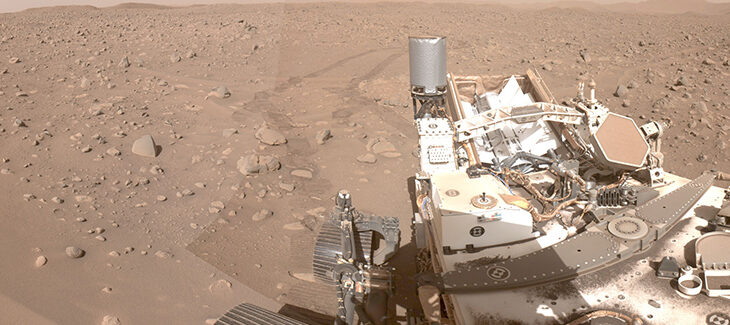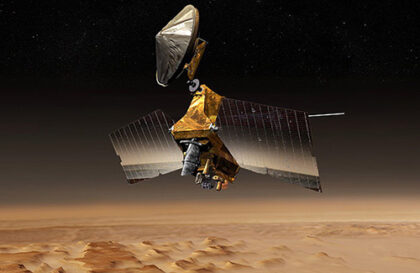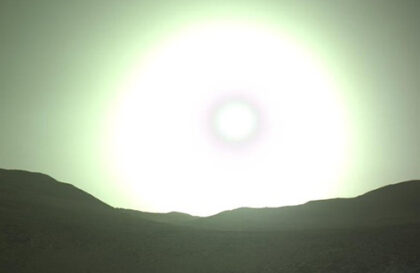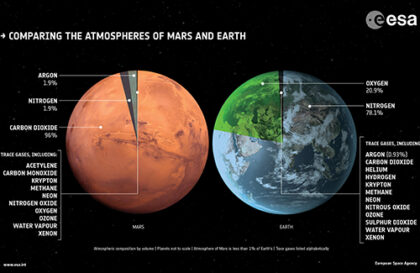The Perseverance Rover is a robotic vehicle designed to explore Mars launched in 2020. The rover is about the size of a car, about 10 feet long, 9 feet wide, and 7 feet tall. Perseverance has an improved landing sequence compared to its predecessor, the Curiosity rover. Landing involves a supersonic parachute, powered descent, and nylon cords that lower the rover to the surface. It is based on the configuration of Mars Science Laboratory’s Curiosity rover, and approximately 85% of Perseverance’s mass is based on Curiosity’s “legacy hardware.”
The rover is part of NASA’s Mars Exploration Program, a long-term robotic exploration of the Red Planet dedicated to looking for signs of life beyond Earth. The rover weighs 2,260 pounds, which is less than a compact car. It can operate during dust storms that block the sunlight needed to operate solar-powered spacecraft and has a new and more efficient wheel design than its predecessor. Parts of the rover are designed to keep it “alive” and able to explore.
Caching demonstrates the ability of the new rover to collect and store samples for possible future retrieval and laboratory analysis on Earth. The rover carries a drill to take samples of Martian rocks and soil and stores them in tubes on the Martian surface using “caching depots.”
Credit: NASA
The Perseverance Rover team dealt with a global pandemic in preparation for launch, but the rover is currently in good shape. Its purpose is to search for evidence of microbial life that may have thrived on Mars in the past, and it has a long-range mobility system allows it to travel between 3 and 12 miles on the Martian surface. Perseverance can also deliver onboard samples to a rocket lander, and the Mars Sample Return campaign can recover sample tubes stored by the rover in the future.
What is the purpose of the Perseverance Rover mission?
The mission’s primary goal is to search for evidence of ancient microbial life on Mars. At the same time, it seeks to identify and characterize the planet’s geology, climate, and other environmental conditions that could have supported life in the past. Additionally, the mission aims to mark humanity’s journey beyond Earth, paving the way for future manned missions to Mars. However, it is essential to note that the rover will not return to Earth after completing its mission, making this an entirely new chapter in exploring the nearby planet.
The rover’s mission is to study the Martian environment in detail, particularly searching for preserved signs of ancient biosignatures in rock samples. The rocks formed in an old Martian environment that could have been favorable for microbial life. The rover was equipped with advanced technologies and instruments such as SuperCam and MOXIE, providing valuable data for future research and potentially paving the way for human missions to Mars. The decision to launch the Perseverance rover was based on the success of the Curiosity rover and the recommendations of a decade-long survey that identified Mars as a priority location for exploration.
What are the key features and capabilities of the Perseverance Rover?
The Perseverance Rover is a significant upgrade over its predecessor, the Curiosity Rover. One of its notable features is the ability to travel further a day. In addition, it can plan its movement paths, which the Curiosity Rover did not.
Credit: NASA
The Perseverance Rover is also more autonomous than Curiosity, with advanced systems allowing it to operate independently for extended periods. In addition, the Rover is designed to be more robust, with improved wheels and other vital components that are more resistant to wear compared to the Curiosity Rover. Perseverance Rover’s larger design provides more space for science instruments and equipment. With these advanced features and capabilities, the Perseverance rover is ready to explore during its mission to search for signs of habitable conditions and past microbial life on Mars.
NASA’s Perseverance Rover accomplished much in its first year on Mars. One of the most notable achievements is that he has learned to run, an impressive feat given the complex terrain on the planet’s surface. The rover also demonstrates key technologies for harnessing natural resources in the Martian environment to support life and fuel, a crucial step toward future human exploration of the planet. Additionally, Perseverance monitors environmental conditions to understand how to protect future human explorers.
One of the most exciting aspects of the mission is NASA’s Ingenuity Mars helicopter, which acts as an airborne companion for the rover.
This view of NASA’s Ingenuity Mars Helicopter was generated using data collected by the Mastcam-Z instrument aboard the agency’s Perseverance Mars rover on Aug. 2, 2023, the 871st Martian day, or sol, of the mission, one day before the rotorcraft’s 54th flight. Credit: NASA/JPL-Caltech/ASU/MSSS
The helicopter has completed 19 successful flights as of September 2023 and has provided a new perspective on the Martian terrain, making it easier for the team to plan the way forward. However, Ingenuity’s Mars lander was grounded for nearly a month due to a dust storm, underscoring the challenges of exploring the harsh Martian environment.
What are the future goals of the Perseverance Rover?
The Mars 2020 mission has the potential to impact future Mars exploration significantly, and NASA and the European Space Agency are planning at least two additional tasks to return collected samples to Earth.
Banner image: NASA
Image credit:
https://mars.nasa.gov
https://www.jpl.nasa.gov






